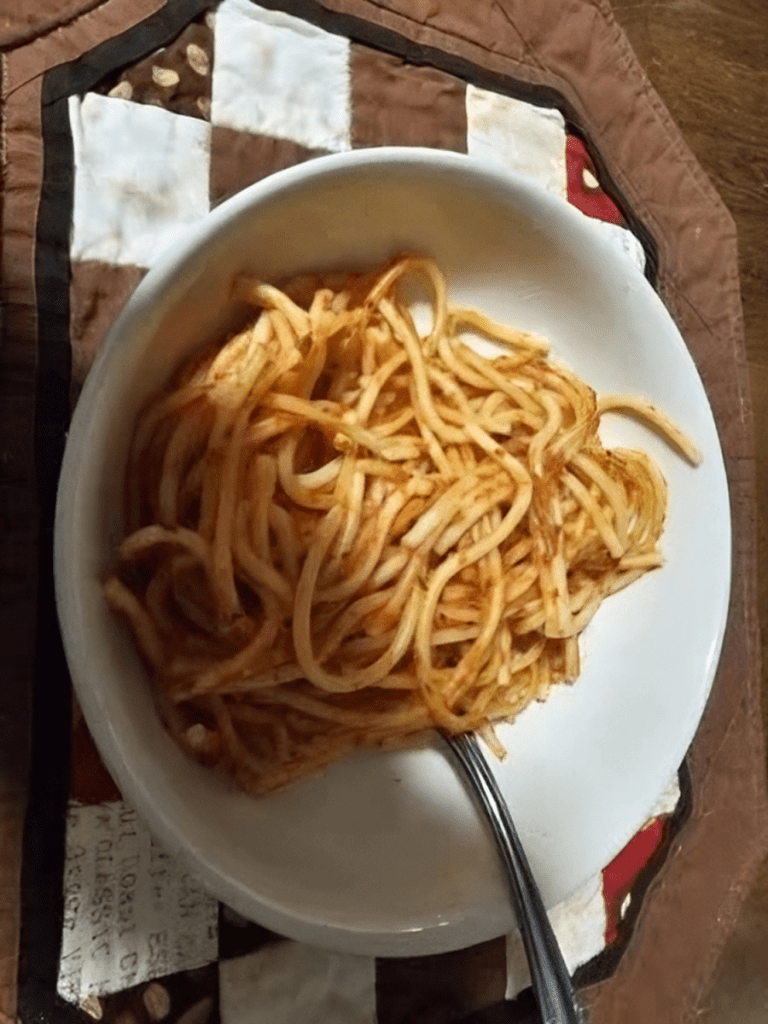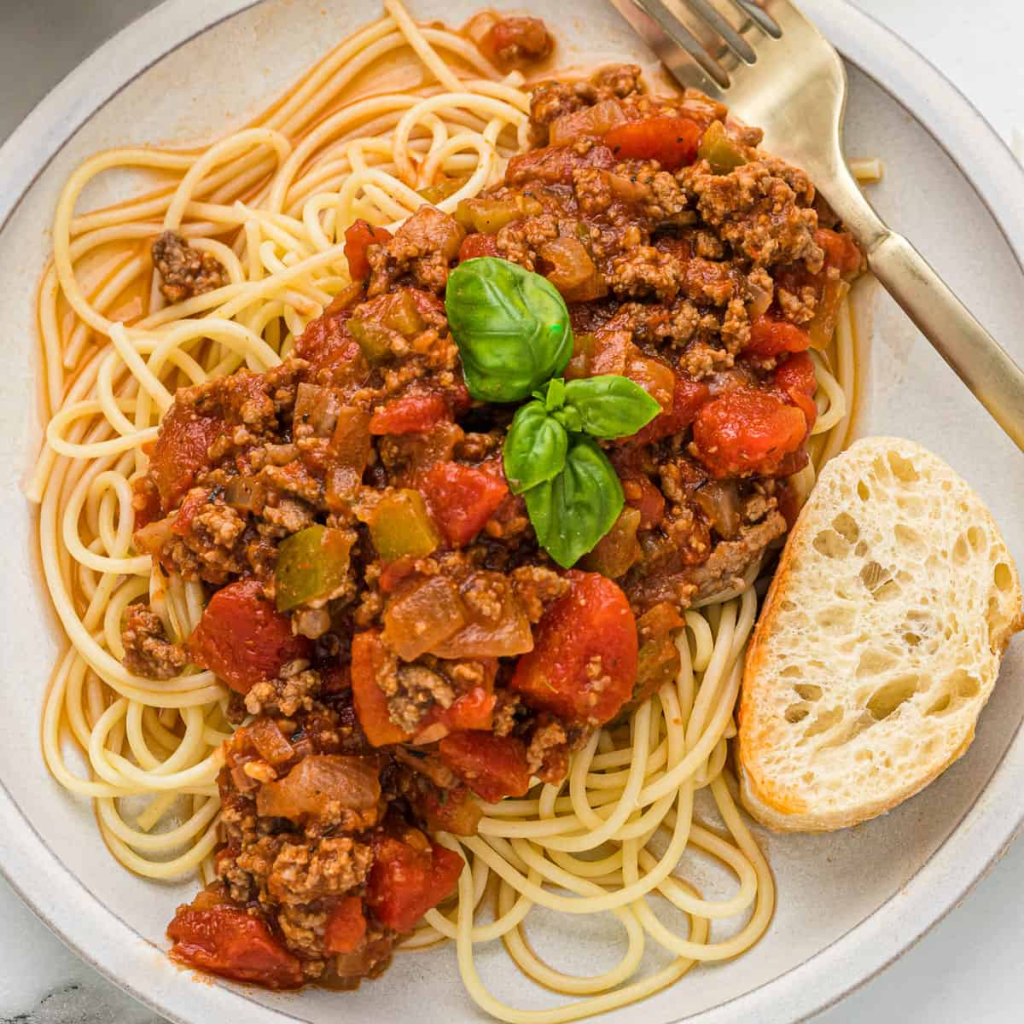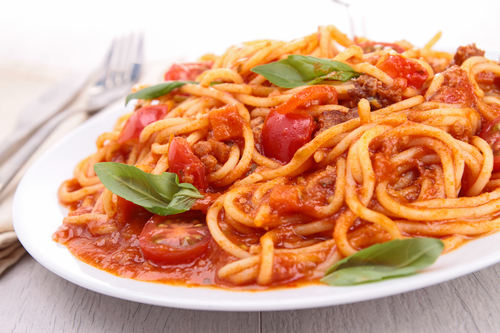Spaghetti sauce is a classic, beloved staple in kitchens around the world. While its basic components — tomatoes, garlic, olive oil, and herbs — remain consistent, there’s one ingredient that sparks heated debates: sugar. Should you add sugar to your spaghetti sauce, or should you leave it out? This long-standing question divides chefs, home cooks, and food lovers alike. To help you decide where you stand, let’s dive into the arguments both for and against adding sugar to your spaghetti sauce.

The Case for Adding Sugar to Spaghetti Sauce
1. Balancing Tomato Acidity
One of the strongest arguments in favor of adding sugar to spaghetti sauce is its ability to balance the natural acidity of tomatoes. Canned tomatoes, especially, can be particularly acidic, leading to a sauce that some might find overly tangy or sharp. By adding just a small amount of sugar, you can reduce this acidity, resulting in a smoother, more balanced sauce. It’s a simple way to mellow out harsh flavors and achieve that ideal, rich taste.
2. Enhancing Overall Flavor
Sugar doesn’t just counterbalance acidity; it can also enhance the natural sweetness of tomatoes. Tomatoes, when cooked down, release their own sugars, but some sauces can still benefit from an extra boost to bring out their full flavor. Adding a pinch of sugar can make the dish more complex, adding depth and sweetness that complements other ingredients like garlic, basil, and oregano. For those who like their sauces a little on the sweeter side, this can be a crucial step in creating the perfect plate of pasta.
3. Personal Preference and Nostalgia
For many home cooks, the decision to add sugar to spaghetti sauce comes down to personal preference. If you grew up in a household where sugar was added, it’s likely that you associate the flavor with comfort and nostalgia. There’s no denying that food memories play a significant role in how we approach cooking, and for some, a hint of sweetness in the sauce is simply how it’s “supposed to taste.”
The Case Against Adding Sugar to Spaghetti Sauce
1. Celebrating Pure Tomato Flavor
Opponents of adding sugar often argue that the natural flavor of tomatoes should be celebrated, not masked. High-quality, ripe tomatoes have their own sweetness and complex flavor profile, which can be overshadowed by the addition of sugar. Many chefs believe that if you’re using good ingredients, there’s no need to sweeten the sauce artificially. Letting the natural sweetness of the tomatoes shine through is the mark of a well-made, authentic spaghetti sauce.
2. Health Concerns and Sugar Avoidance
In today’s health-conscious world, many people are looking for ways to reduce their sugar intake. Processed foods are already loaded with hidden sugars, and some home cooks prefer to keep their sauces free of added sweeteners. For those who are focused on healthier eating, it’s essential to avoid unnecessary sugar, especially when there are other ways to improve the flavor without it. Ingredients like carrots or caramelized onions, which naturally add sweetness, can be used instead.

3. Tradition and Authenticity in Italian Cooking
Traditional Italian recipes typically do not call for sugar in spaghetti sauce. Italian cooks have long relied on the quality of their tomatoes and fresh herbs to build flavor. Some culinary purists argue that adding sugar is an American twist and doesn’t align with the true Italian way of making pasta sauce. If you’re aiming for an authentic Italian flavor, sticking to the basics — without sugar — is often the recommended approach.
Alternatives to Adding Sugar
If you’re looking to avoid sugar but still want to counterbalance the acidity in your sauce, several natural alternatives can help enhance its flavor without the need for sweeteners.
1. Carrots
Grated or finely chopped carrots can be a great addition to your sauce. Carrots naturally release sweetness when cooked and can serve as a subtle way to reduce acidity without altering the sauce’s overall flavor.
2. Onion and Garlic
Cooking onions and garlic slowly until they caramelize can also add a touch of natural sweetness to your sauce. This method is ideal for those who want to avoid sugar but still crave that richer flavor.

3. Fresh Herbs
Adding fresh basil, parsley, or oregano can elevate the flavors in your sauce, making it more vibrant and aromatic. Sometimes, the balance that people seek by adding sugar can be achieved simply by adjusting the herb content.
4. Olive Oil and Butter
A little bit of fat can go a long way in smoothing out the harshness of acidic tomatoes. Adding a splash of olive oil or even a small pat of butter at the end of cooking can round out the sauce, creating a velvety texture and less sharp flavor.
When Should You Add Sugar to Spaghetti Sauce?
Ultimately, whether you add sugar to your spaghetti sauce comes down to personal taste. If you like a slightly sweeter sauce or if the tomatoes you’re using are particularly acidic, a little sugar can improve the overall balance of the dish. However, if you prefer the natural flavor of tomatoes or are trying to follow traditional Italian cooking methods, skipping the sugar is perfectly acceptable.
You might also find that different occasions call for different approaches. If you’re making a quick weekday dinner and want to ensure your sauce is kid-friendly, a spoonful of sugar might be your go-to. On the other hand, if you’re hosting a dinner party with food enthusiasts, you may want to stick to the classic, no-sugar recipe to showcase the freshness and quality of your ingredients.
Conclusion: The Sugar Debate Comes Down to Taste
At the end of the day, there’s no right or wrong answer when it comes to adding sugar to spaghetti sauce. It’s a matter of balancing acidity, enhancing flavors, and respecting personal or traditional preferences. Whether you’re a fan of a slightly sweet sauce or you prefer to let the tomatoes speak for themselves, the best approach is to experiment and find what works for you. So, next time you make a batch of sauce, try it both ways — with and without sugar — and see which one wins a spot in your family’s favorite recipe book!


